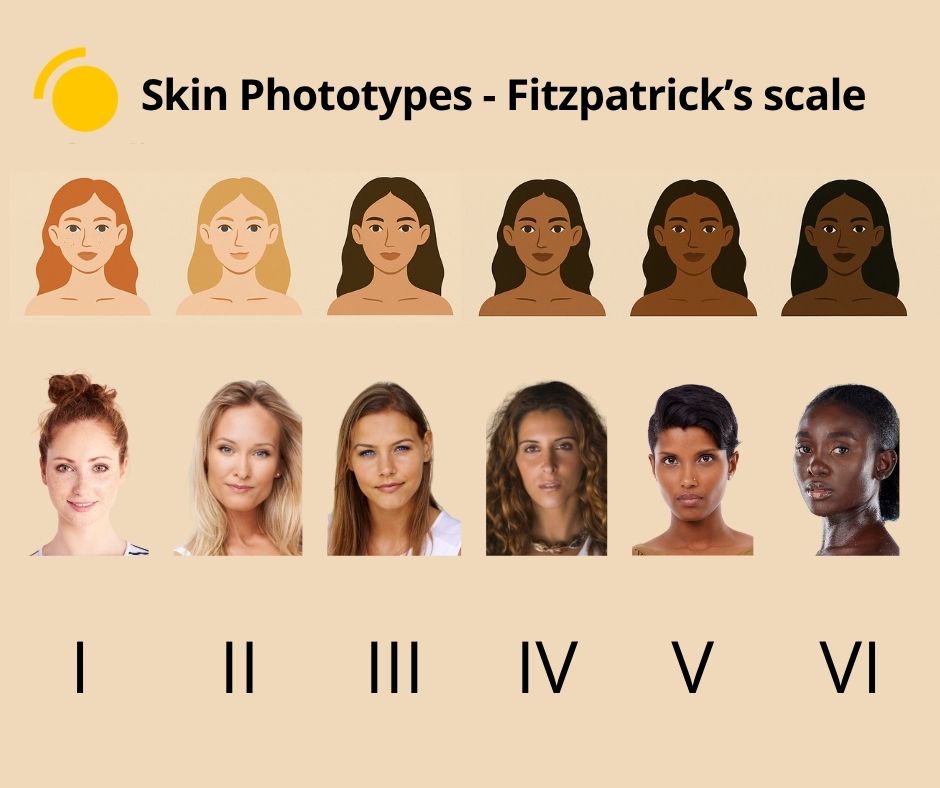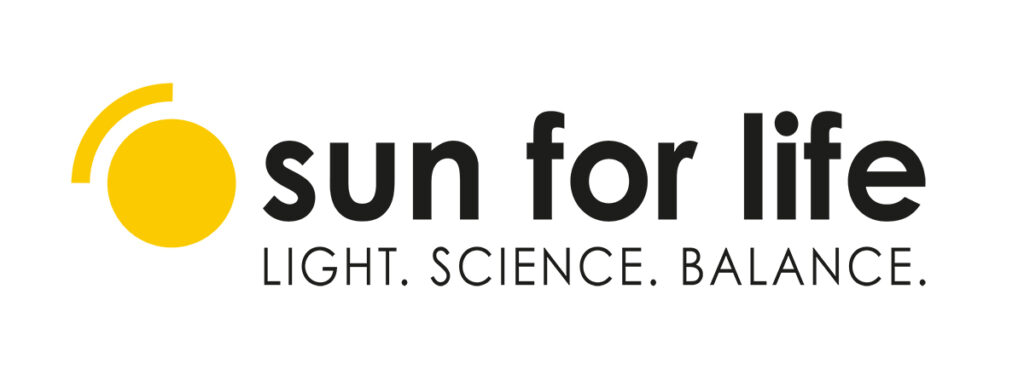What’s your skin phototype? The Fitzpatrick Scale as your compass for safer tanning
Before you turn your face to the sun, ask yourself one question: How does your skin react to UV rays?
Not everyone tans the same way. Some people burn after just 10 minutes, while others develop a golden glow after a short walk. But what really determines this difference?
Now, during the season of sun, sea, and suntans, it’s a great time to get to know your skin type. Your skin phototype determines how long you can stay in the sun, what kind of protection you need, and… how your body will react to those first rays of light.
The Fitzpatrick scale is a simple but efficient tool that helps you enjoy the sun more safely.
What is the Fitzpatrick Scale?
The Fitzpatrick Scale was developed in 1975 by American dermatologist Dr. Thomas Fitzpatrick to predict how the skin responds to light-based treatments (phototherapy). Over time, its use has expanded to sun protection, dermatological diagnostics, and cosmetic science.
In Europe, it is now considered one of the most accurate and practical systems for classifying skin’s sensitivity to UV radiation. Its strength lies in its simplicity and direct connection to how your skin reacts to the sun, whether it tends to burn or tan.
That’s why it is widely used in:
- planning sun exposure,
- choosing cosmetics with appropriate UV filters,
- medical recommendations and skin cancer prevention,
- and in the tanning industry, where it’s a standard safety guideline.
Limitations of the Scale
Although the Fitzpatrick Scale is widely accepted, it’s not without limitations. It was primarily based on the skin responses of people of European descent, which means it may not fully reflect diverse ethnic backgrounds, mixed genetic traits, or individual factors (such as skin conditions or photosensitising medications). It also doesn’t take into account the impact of diet, hormones, or ageing on the skin’s response to light.
Phototype I – Extra caution required
Special care should be taken with individuals who fall into Phototype I. These individuals have a limited ability to develop a protective tan, and their skin often reacts with redness. For this reason, they should avoid using tanning beds and limit sun exposure, especially during peak UV hours.

QUIZ: What’s Your Skin Phototype?
Answer 7 questions and discover your skin type. This quiz is for informational purposes and does not replace a consultation with a dermatologist or specialist.
PHOTOTYPE I – Celtic Type
Always burns, never tans.
Very fair or white skin with many freckles, red or very light blond hair, blue or light green eyes. The skin does not produce a visible tan.
🔆 Recommendation: Very high sun protection (SPF 50+). Avoid sun exposure during peak hours.
PHOTOTYPE II – Northern European Type
Usually burns, tans minimally.
Fair skin, possibly with freckles, light or dark blond or red hair, grey, blue, or green eyes. Tan develops slowly and faintly.
🔆 Recommendation: High protection (SPF 30–50+), with short and gradual sun exposure.
PHOTOTYPE III – Central European Type
Sometimes mildly burns, tans evenly.
Light olive skin, rarely has freckles, dark blond or brown hair, brown, hazel, grey, or blue eyes. Tans visibly and progressively browns.
🔆 Recommendation: Medium protection (SPF 20–30). Moderate sun exposure is recommended.
PHOTOTYPE IV – Southern European / Mediterranean Type
Rarely burns, tans easily.
Olive or darker complexion, may have moles, dark brown or black hair, and dark brown or black eyes. Skin tans quickly and deeply.
🔆 Recommendation: Low protection (SPF 10–20). Still advisable to protect against prolonged UVA exposure.
PHOTOTYPE V – Asian / Arab / Latin American Type
Very rarely burns, tans very easily.
Dark brown or yellowish complexion, dark brown hair, dark brown eyes. Skin has constant pigmentation and handles sun exposure well.
🔆 Recommendation: Very low protection (SPF 6–15). UVA protection is still recommended, especially when UV levels are very high.
PHOTOTYPE VI – African / Caribbean / Oceanian Type
Never burns.
Dark brown or black skin, black hair, black eyes. Deep pigmentation offers natural protection but not absolute immunity.
🔆 Recommendation: Very low protection (SPF 6–15). Skin is still prone to photoaging and needs UVA protection.
What determines your skin colour and tanning ability?
Skin colour is primarily influenced by the amount, type, and distribution of melanin, a natural pigment produced by melanocytes. There are two main types:
- Eumelanin – brown-black pigment, provides effective protection against UV radiation
- Pheomelanin – a yellow-red pigment – offers weaker protection
People with fair skin typically produce more pheomelanin, while those with darker complexions have higher levels of eumelanin.
Melanin acts as a natural sunscreen, offering protection equivalent to SPF 3–15.
A tan is your skin’s defence response to UV radiation. Melanocytes increase melanin production to protect skin cells from DNA damage. The effect appears after a few days and can last for weeks.
However, remember: a tan itself does not offer full protection!
Why is it important to know your skin phototype?
- To choose the right SPF level
- To prevent sunburn, irritation, and pigmentation issues
- To better plan your sun exposure, including safe vitamin D synthesis
Your skin remembers every exposure. Understanding your phototype is the first step toward healthier sun habits.
